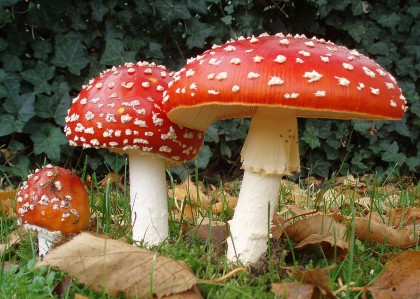 Larry Barnett lives in Sonoma where he was elected to three terms on the City Council and served twice as Mayor. A thirty-three-year resident, he currently serves as Chair of Sonoma's Planning Commission. He has been married for 48 years, has two daughters and three grandchildren.
Larry Barnett lives in Sonoma where he was elected to three terms on the City Council and served twice as Mayor. A thirty-three-year resident, he currently serves as Chair of Sonoma's Planning Commission. He has been married for 48 years, has two daughters and three grandchildren.
Ecstasy in everyday life

For as long as science can tell, humanity has always liked to get high. Between naturally occurring endorphins which stimulate pleasure centers in the brain and substances found in nature (and now chemistry) which act upon those same pleasure centers, getting high is inextricably linked to human culture. Substances are psychoactive precisely because receptor sites on human brain cells bond with them. Endorphins, for example–hormones produced by glands inside our bodies–provide a sense of well-being and reduce pain. Excitement of the brain’s right cortical hemisphere enhances feelings of sacredness and belonging.
In a primordial search for edible or medicinal plants, humankind noted those which had pleasurable or notable psychoactive effects similar to endorphins, or went well beyond the typical psycho-emotional effect of endorphins. This speaks to the co-evolution of animal life and plant life, and the ways in which it produced biological/botanical correspondences and affinities.
Accordingly, human culture is deeply wedded to psychoactive substances. This convergence, some believe, formed the historical root of ecstatic religious experience. There is no doubt that ancient religious rituals were inextricably bound to the ingestion of various types of psychoactive substances–mushrooms, cactus and vines; the ancient Greeks called that substance Soma, and it was at the heart of their religious rituals. The Greeks, of course, were not alone.
Ethnobotanists report the use of Ayahuasca by native people of South America, a psychoactive drink produced from a particular jungle vine and the North American native use of Peyote, which contains psychoactive mescaline, as well as their use of Psilocybin and Amanita muscaria mushrooms also containing psychoactive chemicals. Chewing laurel leaves, coca leaves, and the seeds of Morning Glory are also noted in literature about the ritual use of psychoactive plants. Today, our chemically-inclined modern society consumes billions of gallons of alcoholic drinks, as well as psychoactive medications such as anti-depressants, opiates, amphetamines, tranquilizers, and pain killers.
The term “ecstasy” originates from the Greek word, “Ekstasis,” meaning “to stand outside oneself”; we might say, “high” above oneself. Chemicals are not the only route to ecstasy. Ideas themselves are powerful enough to produce ecstatic emotions, and regularly do. So too, music, dancing and other forms of entertainment take us “outside” ourselves, as do religious rituals, political rallies and that old stand-by sexual activity. Notably, in pursuit of ecstasy people do things that they might otherwise avoid.
The mythical Greek god Dionysus was the personification of ecstasy, and though mostly associated with grape vines, had his beginnings with the ritualistic use of psychoactive mushrooms. That a god of ecstasy was among the Olympian pantheon speaks volumes to its central role in human affairs. Nonetheless, there are those who greatly fear this side of humanity; they compensate for it through the zealotry of prohibition and punishment. Historically, substances like LSD, Mescaline, psilocybin and cannabis have been relegated to the list of prohibited drugs. These are all psychoactive, some greatly so, and thus deserve to be treated carefully, but when they are prohibited, people seeking ecstatic experience instead turn to truly dangerous substances like heroin, methamphetamine, and over-consumption of alcohol.
I will leave the question of why it is that people seek ecstasy–“to stand outside themselves”–for another column, but what is clear is that seeking ecstasy in everyday life remains a high priority among humanity.



